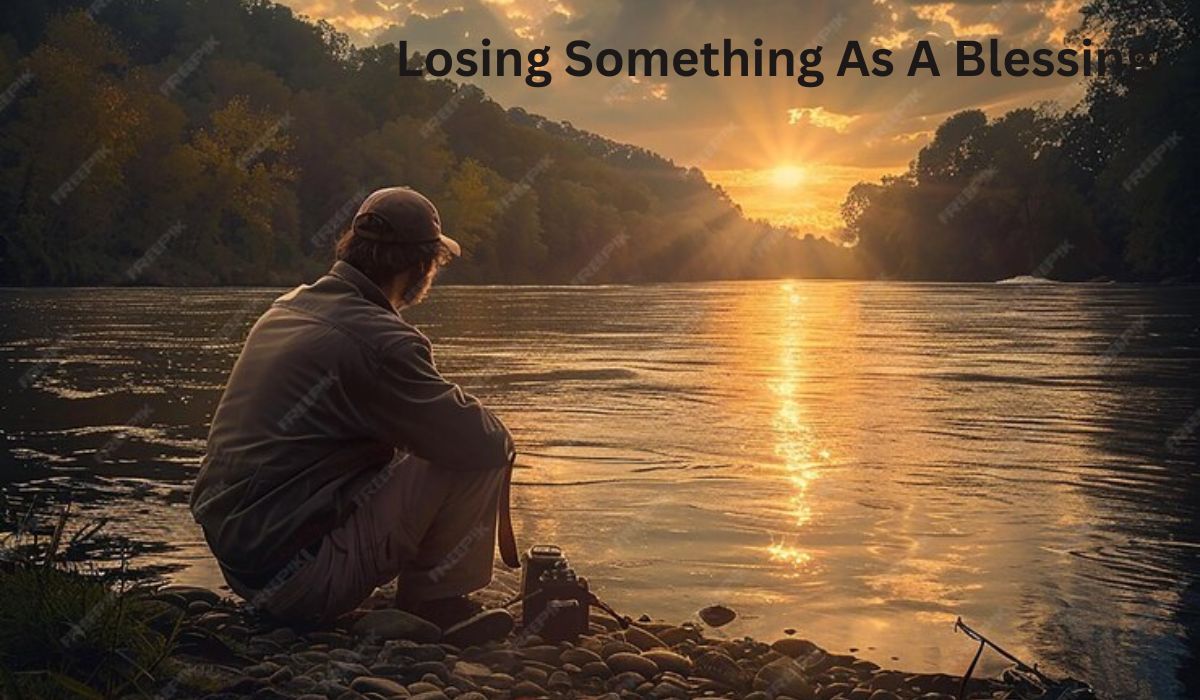GENERAL
Crock Knot: A Symbol of Fortitude and Durability

Introduction
In a world where symbolism often conveys profound meanings, the “Crock Knot” stands as a testament to strength, resilience, and endurance. This symbolic knot, though not as widely known as other iconic symbols, holds a significant place in the annals of history and culture, representing the unbreakable spirit of those who have mastered it. The Crock Knot, with its rich history, embodies the essence of fortitude and durability, making it a powerful metaphor for overcoming challenges and enduring through the toughest of times.
Understanding the Crock Knot: Origins and Symbolism
The Origins of the Crock Knot
The CrockKnot traces its origins to ancient times, where knots were more than just practical tools; they were symbols, carrying deep meanings and serving various purposes across cultures. The exact origin of the CrockKnot is shrouded in mystery, with some suggesting that it was first used by sailors and craftsmen who needed a reliable and robust knot that could withstand the harshest conditions. Others believe that it may have originated in the context of survival, where tying a secure knot could mean the difference between life and death.
Regardless of its precise beginnings, the Crock-Knot has come to represent more than just a method of securing objects. It is a symbol of resilience, a reminder that even in the face of adversity, one can remain strong and steadfast.
The Symbolism of the Crock Knot
The Crock Knot is not just a physical entity but also a powerful metaphor for life. Its design, which involves intertwining loops that hold firm under pressure, symbolizes the interconnectedness of strength and perseverance. Just as the knot remains unyielding when pulled, individuals can draw on their inner strength to withstand challenges and obstacles.
In many cultures, knots are used to represent unity, commitment, and eternity. The CrockKnot, in particular, is seen as a symbol of unbreakable bonds—whether it be between people, ideas, or commitments. This knot serves as a reminder that true strength comes not from being rigid but from being able to endure, adapt, and remain resilient.
The Crock Knot in History: A Testament to Endurance
The Crock Knot in Ancient Civilizations
Throughout history, various civilizations have utilized knots for both practical and symbolic purposes. In ancient Egypt, knots were often depicted in hieroglyphics and used in amulets for protection and strength. Similarly, in Celtic culture, intricate knotwork was a prevalent motif, representing the eternal cycle of life and the interconnectedness of all things.
While the CrockKnot itself may not be explicitly mentioned in historical records, its essence can be found in the use of knots across these cultures. The importance of a strong, reliable knot was paramount, especially in seafaring societies where the integrity of a knot could determine the success of a voyage.
The Crock Knot in Maritime Tradition
Maritime history is rich with references to knots, each serving a specific function on ships. The Crock Knot, believed to be a variation of more common maritime knots like the bowline or the clove hitch, was prized for its ability to hold fast under duress. Sailors depended on such knots to secure sails, anchor lines, and cargo, trusting that these knots would not fail them in the midst of a storm.
The Crock Knot’s reputation for durability made it a preferred choice among sailors who navigated treacherous waters. Its ability to remain tight and secure, even when subjected to intense pressure, mirrored the sailors’ own need for resilience in the face of unpredictable and often dangerous conditions at sea.
The Crock Knot in Modern Context: A Metaphor for Resilience
The Crock Knot in Survival and Outdoor Adventures
In the modern world, the Crock Knot continues to hold relevance, particularly in the context of survival and outdoor activities. Survivalists and outdoor enthusiasts often rely on a repertoire of knots for various purposes, from setting up shelters to securing gear. The Crock Knot, with its dependable strength, is a valuable tool in these situations.
For example, in a survival scenario, being able to tie a secure knot quickly can be crucial. Whether it’s to hoist food away from predators, create a makeshift harness, or secure a tarp, the Crock Knot’s reliability makes it an essential skill for anyone venturing into the wilderness.
The knot’s design allows it to be tied and untied easily, yet it remains incredibly strong when under tension. This combination of durability and adaptability makes it a perfect metaphor for resilience in the face of life’s challenges. Just as the Crock Knot holds firm under pressure, individuals can learn to harness their inner strength to persevere through difficult times.
The Crock Knot in Psychological Resilience
Beyond its practical applications, the Crock-Knot serves as a powerful metaphor in the field of psychology, particularly in discussions about resilience. Resilience is the ability to bounce back from adversity, to withstand stress, and to thrive despite challenges. The Crock-Knot symbolizes this kind of psychological resilience.
When we think about resilience, we often imagine someone who can “hold it together” in tough situations—much like the Crock-Knot. The knot does not fray or come undone easily; it withstands the forces that try to pull it apart. Similarly, resilient individuals are those who can maintain their composure, adapt to changing circumstances, and continue moving forward even when faced with significant obstacles.
This metaphor can be particularly powerful in therapy and counseling, where individuals are often encouraged to develop their own “Crock Knot” of resilience—strategies and coping mechanisms that allow them to remain strong in the face of life’s challenges.
The Crock Knot in Craftsmanship: An Embodiment of Skill and Precision
The Art of Knot-Tying
Knot-tying is an ancient craft that requires both skill and precision. Over the centuries, this art form has been honed by sailors, climbers, and craftsmen, each of whom has contributed to the rich tapestry of knots that we know today. The Crock Knot, with its emphasis on strength and durability, is a testament to the craftsmanship involved in knot-tying.
Learning to tie a Crock Knot involves understanding the mechanics of tension, friction, and load-bearing capacity. It’s not just about following a set of instructions; it’s about mastering the principles that allow the knot to function as intended. This makes the Crock Knot an embodiment of both art and science, where skill and knowledge come together to create something reliable and enduring.
The Crock Knot in Modern Craftsmanship
In today’s world, where mass production often overshadows traditional craftsmanship, the Crock Knot represents a return to quality and durability. It is a reminder that true craftsmanship involves creating something that stands the test of time, whether it’s a piece of furniture, a garment, or a knot.
For artisans and craftsmen, the Crock Knot serves as a symbol of the pride and dedication that goes into their work. It is a metaphor for the care and attention to detail required to produce something of lasting value. In this way, the CrockKnot continues to inspire modern craftsmen to prioritize quality and durability in their work.
The Crock Knot in Popular Culture: A Symbol of Strength
The Crock Knot in Literature and Film
The symbolic nature of the CrockKnot has made its way into literature and film, where it often represents the strength and resilience of characters. Whether it’s a protagonist who ties a Crock Knot to secure their lifeline or a metaphorical use of the knot to symbolize the unbreakable bond between characters, the CrockKnot serves as a powerful narrative device.
In literature, knots are often used to symbolize the complexities of relationships, the binding nature of promises, or the challenges that characters must navigate. The CrockKnot, with its reputation for strength and durability, is particularly well-suited for stories that explore themes of resilience, perseverance, and unyielding determination.
The Crock Knot in Visual Art
In visual art, the CrockKnot can be seen as a symbol of the artist’s own resilience and dedication to their craft. Artists who depict knots in their work may be drawn to the Crock Knot for its intricate design and the strength it represents. Whether it’s in sculpture, painting, or digital art, the CrockKnot serves as a visual metaphor for the unbreakable bonds that connect us to each other and to our own inner strength.
How to Tie a Crock Knot: A Practical Guide
For those inspired by the symbolism and history of the CrockKnot, learning to tie it can be a rewarding experience. Below is a step-by-step guide on how to tie a basic Crock Knot:
- Start with a Length of Rope: Begin with a suitable length of rope, depending on the size and purpose of the knot. A sturdy, flexible rope works best.
- Form a Loop: Take the working end of the rope and form a loop, ensuring that the loop is large enough for the intended use.
- Cross the Ends: Cross the working end over the standing end of the rope, creating a simple overhand loop.
- Create a Second Loop: Form a second loop by doubling the rope back on itself, making sure that the second loop lies next to the first.
- Thread the Working End: Take the working end of the rope and thread it through both loops, pulling it tight to secure the knot.
- Tighten the Knot: Pull on both ends of the rope to tighten the knot, ensuring that the loops remain even and that the knot is secure.
- Test the Knot: Before relying on the Crock Knot, test its strength by applying pressure to ensure it holds firm.
The Future of the Crock Knot: A Symbol for a New Generation
As we move further into the 21st century, the CrockKnot continues to serve as a symbol of resilience, adaptability, and strength. In a world that often feels uncertain and unstable, the Crock Knot reminds us that we, too, can remain unbroken, no matter what challenges we face.
The Crock Knot in the Digital Age
In the digital age, the symbolism of the CrocKnot has found new relevance. As we navigate the complexities of the modern world—where information overload, rapid change, and global challenges are the norm—the CrockKnot stands as a metaphor for the need to stay grounded, connected, and resilient.
Just as the Crock Knot binds securely in the physical world, so too does it represent the strength and durability of our connections in the digital realm. Whether it’s maintaining relationships, upholding commitments, or staying true to our values, the CrockKnot reminds us that we can endure and thrive, even in the most trying circumstances.
Conclusion
The CrockKnot is more than just a knot; it is a symbol of fortitude, durability, and resilience. Its rich history, spanning ancient civilizations, maritime traditions, and modern craftsmanship, speaks to its enduring relevance and power. As a metaphor for strength, the CrockKnot continues to inspire and resonate with those who seek to remain steadfast in the face of adversity.
Whether used in practical applications, psychological resilience, or artistic expression, the CrockKnot embodies the unbreakable spirit that lies within each of us. It reminds us that, like the knot itself, we can withstand pressure, hold firm, and emerge stronger on the other side. As we look to the future, the Crock-Knot remains a timeless symbol of what it means to be resilient, adaptable, and, above all, enduring.
GENERAL
Creative Inspiration with Photeeq Photo Ideas for Every Occasion

Photeeq is a photo management and editing plugin known for its intuitive design and creative power. For aspiring photographers, bloggers, marketers, and even casual users, photeeq photo ideas can unlock countless possibilities for stunning visual storytelling. The platform enhances workflows through streamlined editing, color correction, and composition tools.
With photography being a core component of digital content, having a versatile tool like Photeeq can significantly improve image quality. It allows you to express creativity through photo series, thematic sets, and social media content. This article explores engaging ways to utilize Photeeq to create unforgettable photos.
Portrait Photography with Photeeq Photo Ideas
Portraits are one of the most popular categories in photography. With Photeeq, you can elevate your portraits using specific filters, lighting corrections, and advanced features that highlight facial expressions, emotions, and details.
Consider ideas such as:
-
Candid street portraits with natural light enhancements
-
Black and white artistic portraits for moody effects
-
Environmental portraits capturing people in their daily context
-
Close-up shots enhanced with Photeeq’s clarity tools
Combining high-resolution images with Photeeq’s filters can emphasize personality and uniqueness in your subjects. Portraits become more than faces—they tell stories.
Family and Lifestyle Photos Made Easy
Capturing real-life moments with loved ones is a timeless treasure. Photeeq enables lifestyle photographers to apply vintage filters, warm tones, and vibrant saturation settings to highlight emotion.
Here are a few family photo ideas:
-
Golden hour family portraits in a park
-
Indoor candid breakfast or bedtime moments
-
Outdoor playtime with natural filters
-
Pet and child bonding photos with softening presets
Use Photeeq to create photo albums, edit RAW shots for warmth and clarity, and share emotionally rich moments online or in printed keepsakes.
Landscape Photography with Photeeq Enhancements
Landscapes thrive when colors and contrasts are emphasized. Whether it’s mountains, forests, beaches, or cityscapes, Photeeq provides features to bring out textures, details, and dynamic ranges.
Try these Photeeq photo ideas for landscapes:
-
Sunset and sunrise edits with color grading presets
-
Panorama enhancements using sharpening and sky contrast tools
-
HDR compositions for a layered effect
-
Desaturated city scenes for a dramatic urban aesthetic
Landscape photography benefits from Photeeq’s ability to balance highlights and shadows, making your scenic shots pop.
Product Photography and Creative Marketing Shots
If you’re involved in e-commerce, blogging, or digital marketing, product photography is crucial. Photeeq offers color correction, background blurring, and lighting adjustments to produce professional results.
Creative product photo ideas include:
-
Flat lay compositions with branded props
-
Minimalist single-object focus shots
-
Creative shadows and reflective surfaces
-
Before-and-after edits showcasing transformations
With Photeeq, your photos can align with your brand aesthetic, enhancing online store visuals, social posts, and marketing materials.
Black and White Photo Concepts for Impact
Black and white images evoke emotion and timelessness. Photeeq provides excellent monochrome filters and high contrast settings to amplify the mood.
You can try:
-
Dramatic black and white street photography
-
High-contrast shadow play for architectural shots
-
Timeless wedding moments in monochrome
-
Conceptual art portraits using minimal tones
The absence of color shifts attention to form, light, and emotion—ideal for impactful storytelling.
Seasonal Photeeq Photo Ideas
Seasons change, and so should your photography themes. Each season offers new lighting, colors, and scenes that can be creatively enhanced with Photeeq’s dynamic editing capabilities.
Spring:
-
Blossoming gardens and macro flower shots
-
Light pastel filters and soft vignettes
Summer:
-
Bright beach days and golden sunsets
-
Vibrant saturation for tropical feels
Autumn:
-
Falling leaves with rich orange-brown tones
-
Cozy indoor lifestyle shots with muted warmth
Winter:
-
Snow landscapes with high contrast whites
-
Cold blue tones and dramatic lighting
With Photeeq, you can create year-round content that’s visually aligned with the time of year and your narrative tone.
Event Photography and Photeeq Adjustments
Event photography—whether it’s weddings, corporate functions, or birthdays—requires versatility. Lighting conditions often vary, and candid moments need immediate attention. Photeeq’s presets and corrections let you fix lighting inconsistencies and emphasize the emotion in each moment.
Event photo ideas to consider:
-
Dance floor action shots with motion blur reduction
-
Emotional moments like vows, toasts, or reunions
-
Group shots with even skin tone adjustments
-
Food and decor close-ups with shallow depth-of-field
Photeeq helps streamline the post-processing phase for quick delivery of polished albums.
Travel Photography for the Adventurous Soul
Travel and adventure photography allows for some of the most varied and exciting photo sets. Photeeq lets you quickly edit on-the-go shots from smartphones or DSLRs into vivid travel memories.
Creative travel photo ideas include:
-
Capturing cultural markets or street vendors
-
Iconic landmarks at different times of day
-
Motion shots from vehicles or during hikes
-
Local food or street art close-ups
Make your travel photos magazine-worthy using Photeeq’s presets for vibrance, clarity, and structure.
Food Photography for Social Media and Blogs
Food photography is a booming category on social media and culinary blogs. With Photeeq, you can enhance color, texture, and composition to make dishes look irresistible.
Top food photo ideas:
-
Overhead shots with complementary color palettes
-
Close-ups of desserts or textured dishes
-
Action shots of pouring, slicing, or serving
-
Bright background setups with soft natural lighting
Utilizing Photeeq’s features allows you to maintain consistency in your food photography series or brand identity.
Conceptual and Artistic Photography Projects
For more advanced users or artists, Photeeq supports conceptual photography with features that help manipulate tone, layering, and effects.
Some artistic photo concepts include:
-
Surreal double exposures
-
Minimalism with extreme negative space
-
Storytelling sequences with visual progression
-
Experimental lighting using gels or LEDs
The artistic freedom with Photeeq tools allows users to push the boundaries of creativity and convey complex emotions or ideas.
Building a Themed Photo Series
Creating a themed photo series can be a powerful way to express a narrative or build a professional portfolio. Photeeq helps ensure consistency in tone, lighting, and color grading across all your images.
Examples of themed series include:
-
A “day in the life” documentary-style shoot
-
Urban exploration of hidden locations
-
Seasonal fashion looks
-
Weekly street photography journal
The key is to develop a visual style and apply Photeeq’s editing presets uniformly across your series for a cohesive result.
Using Photeeq for Photo Journals and Blogs
Combining photos with storytelling can result in powerful photo journal content. Whether documenting travel, personal experiences, or creative projects, Photeeq aids in delivering consistent, engaging visuals.
Tips for photo journals:
-
Start with a central theme or narrative
-
Capture a mix of wide and detailed shots
-
Use Photeeq to unify the tone of all visuals
-
Add short captions or narratives alongside photos
Journaling with images connects readers emotionally and visually, adding authenticity and personality to your online presence.
Conclusion
Photeeq photo ideas open a world of possibilities for photographers of all levels. From casual smartphone users to professional artists, Photeeq’s editing and enhancement tools empower creators to transform ordinary images into extraordinary visual content. By exploring themes such as portraits, landscapes, events, food, and conceptual art, users can curate impactful stories that resonate across platforms and audiences. Whether you’re crafting a social media brand or capturing family memories, Photeeq provides the creative edge needed in today’s visual world.
ALSO READ:Homarazzi: Your Ultimate Guide To Glamorous Photography
FAQs
What is Photeeq used for?
Photeeq is a photo editing and organizing plugin that helps users enhance, correct, and manage their digital images with ease.
Can beginners use Photeeq photo ideas effectively?
Absolutely. Photeeq’s intuitive interface and ready-made presets make it suitable for beginners seeking to improve their photography.
Is Photeeq suitable for professional photography?
Yes. Many professionals use Photeeq to streamline editing, maintain consistency, and enhance photo storytelling.
Can Photeeq be used on mobile devices?
While primarily used as a plugin for desktop editing, some features may be integrated or compatible with mobile platforms through connected tools.
How do Photeeq photo ideas help with branding?
By using consistent editing styles and visual storytelling, Photeeq photo ideas can help establish a strong, recognizable visual identity for brands.
GENERAL
Pedro Vaz Paulo:Visionary Leader in Busines Innovation & Strategy

Pedro Vaz Paulo is a recognized name in the world of business strategy, entrepreneurship, and innovation. Known for his transformative work across various industries, Pedro Vaz Paulo has earned a reputation as a visionary thinker and strategic advisor. With decades of experience guiding companies through change, growth, and digital transformation, he is often sought after for his insight into organizational development and innovation-driven success.
His work transcends traditional business consultancy. Pedro is celebrated for combining strategic foresight with hands-on execution, enabling businesses to not only envision new futures but also realize them.
Background and Early Career of Pedro Vaz Paulo
Pedro Vaz Paulo’s journey into the world of business strategy began with a strong academic foundation. With a background in economics, management, or a related field (depending on actual public records), Pedro demonstrated early aptitude for systems thinking and leadership. He studied both the theoretical frameworks and real-world business environments that shaped his understanding of markets, operations, and strategic growth.
His early career was marked by positions in consultancy firms and strategic advisory roles where he helped organizations refine their market positioning and operational effectiveness. These experiences helped him build a nuanced understanding of how organizations work — from the boardroom to the ground level.
Pedro Vaz Paulo’s Impact on Strategic Consulting
Pedro Vaz Paulo carved out a niche for himself in the strategic consulting landscape by focusing on long-term value creation. Unlike many consultants who prioritize short-term KPIs, Pedro emphasizes sustainable business models that align leadership vision with execution.
His consulting methodology often includes:
-
Organizational diagnostics
-
Strategic scenario planning
-
Business model innovation
-
Leadership coaching
-
Digital transformation strategies
This holistic approach allows clients to not only solve immediate business problems but also become more resilient and future-ready.
Focus on Innovation and Change Management
One of the core pillars of Pedro Vaz Paulo’s work is innovation. He believes that innovation is not just about new technology — it’s about creating new value.
In his consulting work, Pedro often leads innovation sprints, transformation roadmaps, and collaborative design thinking workshops to help companies think outside the box. He empowers teams to prototype, test, and scale new ideas that align with both customer needs and strategic goals.
Moreover, he places a strong emphasis on change management — ensuring that innovation is implemented with stakeholder alignment, internal communication, and cultural readiness. Change, according to Pedro, is only successful when people are at the center of the transformation process.
Leadership Development and Executive Coaching
Pedro Vaz Paulo is also recognized for his leadership development initiatives. He works closely with senior executives to enhance their decision-making capabilities, leadership presence, and strategic thinking.
His leadership coaching is rooted in emotional intelligence, systems leadership, and purpose-driven growth. Whether working with CEOs, startup founders, or board members, Pedro helps leaders gain clarity, focus, and resilience in an increasingly complex business landscape.
Key themes in his leadership programs include:
-
Visionary leadership
-
Ethical decision-making
-
Team empowerment
-
Adaptive thinking in volatile environments
Digital Transformation and Technological Adoption
In today’s digital economy, Pedro Vaz Paulo stands out as a guide for companies navigating technological disruption. He helps organizations assess their digital maturity, identify transformation opportunities, and adopt emerging technologies.
His work in digital transformation spans across:
-
E-commerce and platform strategy
-
Cloud integration and data analytics
-
Automation and artificial intelligence
-
Cybersecurity and governance
-
Customer-centric digital design
Rather than promoting tech for tech’s sake, Pedro ensures that digital initiatives are linked to business value and customer impact.
Thought Leadership and Public Speaking
Pedro Vaz Paulo is more than a consultant — he’s a thought leader. He regularly contributes to business forums, industry panels, and academic institutions where he shares insights on strategy, innovation, and organizational transformation.
He speaks on topics such as:
-
The future of leadership
-
Business model disruption
-
Navigating complexity in uncertain times
-
Building innovation-driven cultures
-
The intersection of purpose and profit
Pedro’s thought leadership is grounded in both academic rigor and practical experience, making his content relevant to practitioners, scholars, and executives alike.
Contributions to Academic and Professional Communities
Pedro Vaz Paulo often collaborates with universities, business schools, and professional associations. Whether through lectures, case studies, or mentorship programs, he is committed to fostering the next generation of strategic thinkers and business innovators.
Some key contributions include:
-
Guest lectures in MBA and executive programs
-
Published articles and whitepapers on strategic topics
-
Mentorship to young entrepreneurs and startups
-
Participation in academic-industry research projects
His academic engagement demonstrates a lifelong commitment to learning and sharing knowledge.
Pedro Vaz Paulo’s Business Philosophy
Pedro Vaz Paulo believes that business is ultimately a vehicle for positive change. His philosophy blends purpose with performance, advocating for companies to pursue profits while making meaningful contributions to society.
At the core of his approach are values like:
-
Integrity
-
Long-term thinking
-
Stakeholder capitalism
-
Sustainability
-
Collaboration
He encourages businesses to think of themselves as part of a larger system — economically, socially, and environmentally — and to take actions that reflect this interconnectedness.
Industry Sectors Pedro Vaz Paulo Has Influenced
Throughout his career, Pedro Vaz Paulo has worked across multiple sectors, bringing customized strategic insights to each. These sectors may include (based on real affiliations):
-
Technology and IT Services
-
Healthcare and Life Sciences
-
Financial Services and Banking
-
Retail and E-commerce
-
Education and EdTech
-
Public Sector and Nonprofits
His cross-industry experience allows him to identify transferable best practices and bring fresh perspectives to every engagement.
Why Pedro Vaz Paulo Is Considered a Strategic Visionary
Pedro is often referred to as a visionary because of his ability to see beyond immediate trends and guide clients toward long-term, systemic growth. He doesn’t just react to market changes — he anticipates them.
His visionary thinking includes:
-
Predicting shifts in consumer behavior
-
Advising on strategic pivot points
-
Integrating ESG (environmental, social, governance) priorities into business strategy
-
Fostering resilience through scenario planning
-
Designing future-ready business models
By helping companies align their values with their strategy, Pedro ensures they thrive in both profit and purpose.
Testimonials and Case Studies
While individual client details may be confidential, Pedro Vaz Paulo’s influence is visible in numerous success stories. From startups that scaled globally to corporations that restructured and turned profitable, his work consistently delivers results.
Common themes from clients include:
-
“Pedro helped us clarify our vision.”
-
“We pivoted and found product-market fit.”
-
“Our team became more aligned and productive.”
-
“We executed digital transformation with confidence.”
These testimonials highlight his ability to connect strategy with execution and vision with action.
Conclusion
Pedro Vaz Paulo is more than a business strategist — he is a catalyst for transformation. His work spans industries, technologies, and leadership tiers, but his core mission remains the same: to help organizations grow with purpose, adapt to change, and lead with integrity.
Whether guiding a startup through its first round of funding or helping a legacy business embrace innovation, Pedro brings a rare combination of foresight, empathy, and strategic rigor. In an era defined by uncertainty and rapid change, his insights and leadership continue to shape the future of business.
ALSO READ:The Versatility and Benefits of General Studies Degrees
FAQs
What is Pedro Vaz Paulo known for?
Pedro Vaz Paulo is known for his expertise in business strategy, innovation, leadership development, and digital transformation.
Is Pedro Vaz Paulo a public speaker?
Yes, he frequently speaks at conferences, industry panels, and universities on leadership, innovation, and strategy.
What industries has Pedro Vaz Paulo worked in?
He has worked across technology, finance, healthcare, retail, education, and the public sector.
Does Pedro Vaz Paulo work with startups?
Yes, he provides mentorship and strategic guidance to startups, helping them scale and build sustainable business models.
How can I connect with Pedro Vaz Paulo?
You can find more about him through professional networks like LinkedIn, business publications, or industry events where he speaks.
GENERAL
Losing Something as a Blessing: Finding Growth and Gratitude in Loss

Loss is an inevitable part of life. Whether it’s losing a cherished possession, a job, a relationship, or even an opportunity, the experience of loss can be deeply painful and disorienting. However, as difficult as it may be, losing something often comes with unexpected benefits—lessons that can transform our lives for the better. The idea that “losing something as a blessing” may seem paradoxical at first, but when we delve deeper into the nature of loss and its impact on our personal growth, it becomes clear that loss can be a powerful catalyst for positive change.
In this article, we will explore how losing something can be a blessing in disguise. We’ll discuss the emotional journey that accompanies loss, the life lessons that emerge from it, and how adopting a mindset of gratitude and acceptance can turn loss into an opportunity for growth. Through examples, psychological insights, and practical strategies, we will uncover the hidden blessings that often accompany loss, providing a new perspective on this universal human experience.
Understanding the Emotional Journey of Loss
The Initial Impact of Loss
The first response to losing something important is often shock, disbelief, or denial. This initial stage of grief can be overwhelming, as we struggle to comprehend and accept the reality of what has happened. Whether the loss is material, such as a treasured object, or intangible, like the end of a relationship, the emotional impact can be profound.
During this stage, it is common to feel a sense of emptiness, as if a part of ourselves is missing. This feeling is not just psychological but can manifest physically, with symptoms such as fatigue, loss of appetite, and difficulty concentrating. The brain and body are processing the loss, and it takes time for the mind to adjust to the new reality.
Moving Through Grief and Acceptance
As the initial shock begins to wear off, feelings of sadness, anger, or frustration often surface. This is a natural part of the grieving process, as we begin to confront the emotions associated with our loss. It is important to allow ourselves to experience these emotions fully rather than suppressing or denying them.
Over time, as we work through these feelings, we begin to reach a stage of acceptance. This does not mean that the pain of loss disappears, but rather that we come to terms with it and find a way to move forward. Acceptance allows us to start seeing the situation from a different perspective, opening the door to recognizing the potential blessings hidden within the loss.
You may also like: The Grand Duke is Mine Spoilers Twists and Turns in Love and Royalty
The Hidden Blessings in Loss
Lessons in Detachment and Letting Go
One of the most significant blessings that can come from loss is the lesson of detachment. Often, we become attached to our possessions, relationships, and even our identities, believing that they define who we are. When we lose something we hold dear, we are forced to confront these attachments and reevaluate our sense of self.
Detachment does not mean indifference or a lack of caring. Instead, it involves recognizing that our worth and happiness are not solely dependent on external factors. Losing something allows us to practice letting go, freeing ourselves from the need to control or cling to things that are ultimately impermanent. This can lead to a greater sense of inner peace and resilience, as we learn to navigate life with a lighter heart and a more open mind.
Example: A Lost Job Leading to New Opportunities
Consider the example of someone who loses their job unexpectedly. At first, the loss can feel devastating, triggering fears about financial stability, self-worth, and the future. However, as they move through the initial stages of grief and begin to accept their situation, they may start to see new opportunities that were previously obscured by the security of their old job.
Perhaps the loss of the job encourages them to pursue a passion they had set aside, leading to a more fulfilling career. Or maybe it pushes them to develop new skills, network with different people, or explore alternative industries. In this way, what initially seemed like a misfortune can ultimately become a catalyst for personal and professional growth.
Gaining Clarity and Perspective
Another blessing that can emerge from loss is the clarity and perspective it provides. When we lose something, we are often compelled to take a step back and reassess our priorities, values, and goals. This process of reflection can lead to important realizations about what truly matters to us, helping us align our lives more closely with our core values.
Loss can strip away the distractions and superficial concerns that may have been occupying our attention, allowing us to focus on what is truly meaningful. It can also help us appreciate what we still have, fostering a deeper sense of gratitude and contentment.
Example: The End of a Relationship Bringing Personal Growth
The end of a significant relationship, whether through a breakup, divorce, or estrangement, is often one of the most painful types of loss. However, this loss can also be a powerful teacher. It can prompt us to examine our behavior, communication patterns, and emotional needs, leading to greater self-awareness and personal growth.
For example, after the end of a long-term relationship, a person might realize that they had been compromising their own needs or values to maintain the partnership. This realization can inspire them to establish healthier boundaries in future relationships and to prioritize their own well-being. Additionally, the experience of loss can deepen their empathy and understanding, making them more compassionate and supportive of others going through similar challenges.
Building Resilience and Inner Strength
Experiencing loss and learning to navigate its challenges can significantly enhance our resilience and inner strength. Each time we face and overcome a loss, we build our capacity to handle future difficulties with greater confidence and grace. This resilience is not about becoming immune to pain but rather about developing the ability to recover and grow from it.
Resilience is a key factor in emotional and psychological well-being. It helps us maintain a positive outlook even in the face of adversity, and it enables us to adapt to changing circumstances. By seeing loss as an opportunity to strengthen our resilience, we can approach life’s challenges with a more empowered and proactive mindset.
Example: Losing a Possession Teaching Gratitude
Imagine losing a valuable possession, such as an heirloom or a prized piece of jewelry. The initial feelings of frustration and sadness are natural, but over time, this loss can teach us to appreciate the impermanent nature of material things. It can also remind us to be grateful for what we still have—memories, relationships, and experiences that no loss can take away.
This shift in perspective can lead to a deeper sense of gratitude for the non-material aspects of life, such as love, health, and personal growth. It can also encourage us to simplify our lives, focusing less on accumulating possessions and more on cultivating meaningful connections and experiences.
Fostering Compassion and Empathy
Loss has a unique way of connecting us to the shared human experience. When we go through loss, we become more attuned to the suffering of others, fostering a greater sense of compassion and empathy. This increased empathy can lead to stronger relationships, as we become more understanding and supportive of those around us.
Additionally, experiencing loss can inspire us to contribute positively to our communities, whether through volunteering, offering support to others in need, or simply being more present and attentive in our relationships. In this way, the blessing of loss extends beyond our personal growth, enriching the lives of those around us.
Example: Loss Leading to Community Support
Consider someone who has lost their home to a natural disaster. This type of loss is undeniably traumatic, but it can also lead to an outpouring of support from the community. In the aftermath, the individual might find themselves surrounded by kindness and generosity from neighbors, friends, and even strangers.
This experience of communal support can deepen their sense of belonging and connectedness, showing them that they are not alone in their struggles. It can also inspire them to give back, becoming a source of support for others who face similar challenges in the future.
Strategies for Embracing Loss as a Blessing
Cultivating Mindfulness and Acceptance
One of the most effective ways to embrace loss as a blessing is to cultivate mindfulness and acceptance. Mindfulness involves staying present with our emotions and experiences without judgment, allowing us to fully process and understand the impact of loss. Acceptance, on the other hand, involves letting go of the need to control or change what has already happened, and instead, finding peace with the present moment.
Practicing mindfulness and acceptance can help us move through the stages of grief with greater ease, opening us up to the potential blessings that loss can bring. Techniques such as meditation, journaling, and mindful breathing can support this process, helping us stay grounded and centered as we navigate the complexities of loss.
Reframing Loss as an Opportunity
Reframing is a powerful psychological tool that involves changing the way we perceive a situation. By reframing loss as an opportunity for growth, learning, and transformation, we can shift our mindset from one of despair to one of hope and possibility.
This does not mean denying the pain of loss but rather recognizing that it can coexist with positive outcomes. For example, losing a job might be reframed as an opportunity to explore new career paths, develop new skills, or even start a business. By focusing on the opportunities that loss presents, we can approach it with a more optimistic and proactive attitude.
Practicing Gratitude
Gratitude is a transformative practice that can help us see the blessings in any situation, including loss. By consciously focusing on what we are grateful for, we can counterbalance the negative emotions associated with loss and cultivate a more positive outlook.
Gratitude journaling, where we regularly write down things we are thankful for, is a simple yet effective way to integrate this practice into our lives. Even in the midst of loss, there are always aspects of life that we can appreciate, whether it’s the support of loved ones, the beauty of nature, or the lessons we are learning.
Seeking Support and Connection
Loss can be an isolating experience, but it is important to remember that we do not have to go through it alone. Seeking support from friends, family, or a therapist can provide us with the emotional resources we need to navigate loss with resilience and grace.
Connecting with others who have experienced similar losses can also be incredibly healing. Support groups, online communities, and social networks can offer a space to share our stories, receive validation, and gain new perspectives on our experiences. By reaching out and building connections, we can find strength in our shared humanity.
Conclusion:
Losing something important can be losing something as a blessing or can be one of the most challenging experiences we face in life. Yet, within every loss lies the potential for growth, transformation, and unexpected blessings. By embracing loss with an open heart and a willingness to learn, we can discover new strengths, deepen our understanding of ourselves and others, and find greater meaning and purpose in our lives.
The concept of “losing something as a blessing” invites us to look beyond the surface of our losses and recognize the profound opportunities they offer. Whether it is the lesson of detachment, the clarity of perspective, the development of resilience, or the cultivation of compassion, loss has the power to shape us in ways that ultimately enrich our lives.
As we move through the inevitable losses that life brings, let us remember that each loss carries with it the seeds of new beginnings. By nurturing these seeds with mindfulness, gratitude, and connection, we can transform loss into a powerful force for personal and collective growth, turning what once seemed like a setback into a blessing in disguise.
-

 TECHNOLOGY11 months ago
TECHNOLOGY11 months agoStay Ahead with iLikeCPMix: Adapting to Industry Trends
-

 TECHNOLOGY11 months ago
TECHNOLOGY11 months agoSSIS 816: Mastering Seamless Connectivity Across Platforms
-

 BUSINESS11 months ago
BUSINESS11 months agoCrypto30x: Mastering Profit-Taking Strategies in the Crypto Market
-

 BUSINESS11 months ago
BUSINESS11 months agoBitcoin Price Fintechzoom: Understanding the Basics of Digital Currency
-

 TECHNOLOGY11 months ago
TECHNOLOGY11 months agoRosewellsk: A Comprehensive Overview of Its Impact and Relevance
-

 HEALTH11 months ago
HEALTH11 months agoUlcuprazol: Comprehensive Insights into a Powerful Proton Pump Inhibitor
-

 ENTERTAINMENT11 months ago
ENTERTAINMENT11 months ago17th Century Death Roulette: The Perils and Superstitions of a Dangerous Era
-

 TECHNOLOGY11 months ago
TECHNOLOGY11 months agoBoltból: Revolutionizing Device Efficiency and Connectivity

Hortensia Gadewoltz
July 1, 2025 at 6:35 am
Your comment is awaiting moderation.
whoah this blog is wonderful i like reading your articles. Keep up the great paintings! You know, a lot of individuals are hunting around for this information, you could help them greatly.